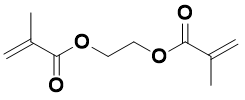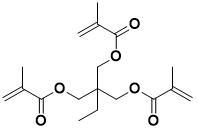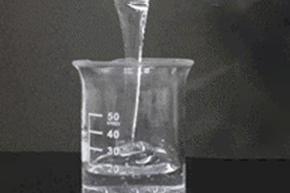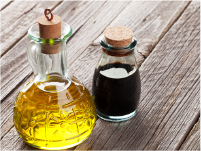Petrochemical Intermediates
324 products.
Filter by business area
[Close]
180 products.
[Close all]
Benzene
[Close]
C5
[Close]
The C5 fraction is a co-product of naphtha cracking and is used as a raw material for synthetic rubber and petroleum resins.
Thermal Cracked Gasoline
[Close]
In conjunction with naphtha cracking, benzene, toluene, and cumene are extracted.
Toluene
[Close]
Propylene
[Close]
Ethylene bottom
[Close]
Ethylene bottom is a co-product of naphtha cracking and is used as a raw material for carbon black.
Ethylene
[Close]
C9
[Close]
The C9 fraction is a co-product of naphtha cracking and is used as a raw material for petroleum resins.
High Purity Ethylene Carbonate
[Close]
High Purity Ethylene Carbonate. As ethylene carbonate is a highly polar solvent and dissolves large amount of electrolyte, it is mainly used in lithium batteries electrolyte solution. It can also readily dissolve polymers leading to use as a release agent and detergent. Our product is high quality with low impurity levels and low moisture. It has earned an excellent reputation for adherence to the strict quality standards demanded by our customers.
EINECS: No.202-510-0
Japan, Chemical Substances Control Law: METI-No. 5-523
Triethylene glycol
[Close]
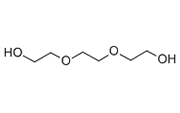
Triethylene Glycol is widely used as a solvent. It has a high flash point, emits no toxic vapors, and is not absorbed through the skin.
EINECS: No. 203-953-2
Japan, Chemical Substances Control Law: METI-No. 2-429
Japan, Poisonous and Deleterious Substances Control Law: Not applicable.
Japan, Fire Services Law: Hazardous material Class 4 Petroleums No.3 (water soluble liquid).
Diethylene glycol
[Close]
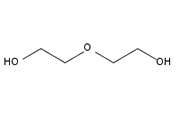
Diethylene glycol is widely used as a solvent. It has a high flash point, emits no toxic vapors, and is not absorbed through the skin.
EINECS: No. 203-872-2
Japan, Chemical Substances Control Law: METI-No. 2-415
Japan, Fire Services Law: Hazardous material Class 4 Petroleums No.3(water soluble liquid).
Ethylene glycol
[Close]
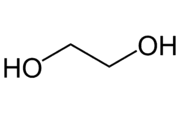
Monoethylene glycol is one of the main raw materials for polyethylene terephthalate (PET resin). It is widely used for automotive antifreeze solutions because the freezing point is low, toxicity is low, and it is completely miscible in water.
EINECS: No. 203-473-3
Japan, Chemical Substances Control Law: METI-No. 2-230
Japan, Fire Services Law: Hazardous material Class 4 Petroleums No. 3 (water-soluble liquid).
Ethylene Carbonate
[Close]
As ethylene carbonate is a highly polar solvent and dissolves large amount of electrolyte, it is mainly used in lithium batteries electrolyte solution. It can also readily dissolve polymers leading to use as a release agent and detergent. Our product is high quality with low impurity levels and low moisture. It has earned an excellent reputation for adherence to the strict quality standards demanded by our customers.
EINECS: No.202-510-0
Japan, Chemical Substances Control Law: METI-No. 5-523
2-Ethyl hexanol
[Close]
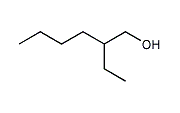
2-Ethyl hexanol is an 8-carbon higher alcohol species. It is used to make the vinyl chloride plasticizer, bis(2-ethyl hexyl) phthalate. It is also used to make 2-ethyl hexyl acrylate for adhesives and paints.
EINECS: No. 203-234-3
Japan, Chemical Substances Control Law: METI-No. 2-217
Japan, Poisonous and Deleterious Substances Control Law: Not applicable.
Japan, Fire Services Law: Hazardous material Class4 Petroleums No.3 (non-water soluble liquid).
n-Butanol
[Close]
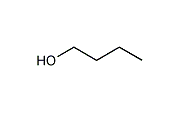
Normal butanol is a 4-carbon, straight-chain alcohol. It is used as a solvent and as a raw material for coating resins, butyl acrylate, butyl acetates, glycol ethers, etc.
EINECS: No. 200-751-6 Japan, Chemical Substances Control Law: METI-No. 2-3049
Japan, Poisonous and Deleterious Substances Control Law: Not applicable.
Japan Fire Services Law: Hazardous material Class 4 Petroleums No.2 (non-water soluble liquid).
Isobutanol
[Close]
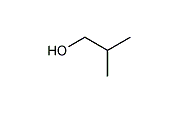
Isobutanol is a 4-carbon branched-chain alcohol used as a raw material for coating resins, Isobutyl acrylate, isobutyl acetate, isobutyl methacrylate, and paint thinners.
(CH3)2CHCH2OHO
Japan, Chemical Substances Control Law: METI-No. 2-3049
Japan, Industrial Safety and Health Law: No. 2-3049
Japan, Law for Pollutant Release and Transfer Register: Not applicable.
Japan, Poisonous and Deleterious Substances Control Law: Not applicable.
Isobutyraldehyde
[Close]
Butyl Acrylate
[Close]
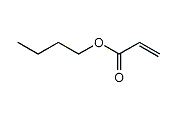
Butyl acrylate (BA) is the ester of acrylic acid and n-butanol. It is used as a raw material for fiber processing agents, adhesives, coatings, plastics, acrylic rubber, and emulsions.
EINECS: No. 205-480-7
Japan, Chemical Substances Control Law: METI-No. 2-989
Japan, Fire Services Law: Hazardous material Class 4 Petroleums No. 2 (non-water soluble liquid).
Ethyl Acrylate
[Close]

Ethyl Acrylate (EA) is the ester of acrylic acid and ethanol. It is used as a raw material for fiber processing agents, adhesives, coatings, plastics, acrylic rubber, and emulsions.
EINECS: No. 205-438-8
Japan Chemical Substances Control Law: METI-No. 2-988
Japan, Fire Services Law: Hazardous material Class 4 Petroleums No. 1 (non-water soluble liquid).
Isobutyl Acrylate
[Close]
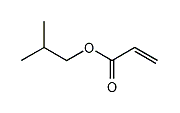
Isobutyl Acrylate (IBA) is the ester of acrylic acid and isobutyl alcohol. It is used as a raw material for adhesives, coatings, plastics, and emulsions.
EINECS: No. 203-417-8
Japan Chemical Substances Control Law: METI-No. 2-989
Japan, Fire Services Law: Hazardous material Class 4 Petroleums No. 2 (non-water soluble liquid).
2-Ethylhexyl acrylate
[Close]
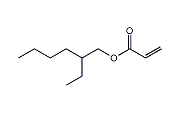
2-Ethylhexyl acrylate (HA) is the ester of acrylic acid and 2-ethyl hexanol. It is used as a raw material to make adhesives, coatings, construction materials, acrylic rubber, and emulsions.
EINECS: No. 203-080-7
Japan Chemical Substances Control Law: METI-No. 2-990
Japan, Fire Services Law: Hazardous material Class 4 Petroleums No. 3 (non-water soluble liquid).
Acrylic Acid・Toluene
[Close]
Acrylic acid is made by the direct oxidation of propylene. Acrylic Acid・Toluene is made by diluting acrylic acid with toluene in a 7:3 ratio.
Japan, Poisonous and Deleterious Substances Control Law: Hazardous substance
Acrylonitrile
[Close]
Acrylonitrile is used as an acrylic fiber and ABS resin, as well as in the production of a variety of other chemical products.
Biocatalyst
[Close]
We launched the world's first biocatalytic industrial production of acrylamide in 1985 and have been offering this product since 1999.
Acrylamide
[Close]
We developed this catalyst and have been offering it as a product since 1976. It has other excellent properties such as its byproduct ratio and ability to treat wastewater.
Phenol
[Close]
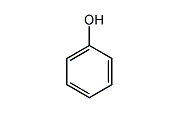
Phenol is an aromatic hydrocarbon compound composed of a benzene ring with a hydroxyl group. It is used as a raw material to make phenolic resins, bisphenol A for epoxy resins, and various pharmaceuticals.
- EINECS: No. 203-632-7
- Japan, Chemical Substances Control Law: METI-No. 3-481
- Japan, Poisonous and Deleterious Substances Control Law: Not applicable.
- Japan, Fire Services Law: Designated combustibles (flammable solid)
Bisphenol A (BPA)
[Close]
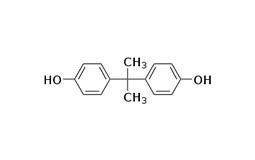
Bisphenol A is produced by reaction of phenol with acetone, and is used as a raw material and additive for epoxy resins and plastics. Mitsubishi Chemical's bisphenol A purity is a major advantage.
- EINECS: No. 201-245-8
- Japan, Chemical Substances Control Law: METI-No. 4-123
- Japan, Poisonous and Deleterious Substances Control Law: Not applicable.
- Japan, Fire Services Law: Not applicable.
Cumene
[Close]
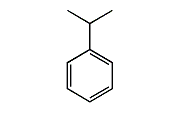
Cumene is an aromatic hydrocarbon used as a raw material for the production of phenol and acetone by the cumene method. Mitsubishi Chemical's cumene features high purity.
- EINECS: No. 202-704-5
- Japan, Chemical Substances Control Law: METI-No. 3-22
- Japan, Poisonous and Deleterious Substances Control Law: Not applicable.
- Japan, Fire Services Law: Hazardous material Class 4 Petroleums No.2 (non-water soluble liquid).
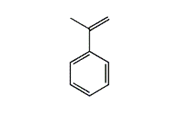
alpha-Methylstyrene is similar to styrene in its polymerization, but if it is used instead of styrene to make ABS resin, the ABS resin will have better thermal stability. alpha-Methylstyrene is also used as a raw material for paints and adhesives.
- EINECS: No. 202-705-0
- Japan, Chemical Substances Control Law: No. 3-5
- Japan, Poisonous and Deleterious Substances Control Law: Not applicable.
- Japan, Fire Services Law: Hazardous material Class 4 Petroleums No.2 (non-water-soluble liquid).
Acetone
[Close]
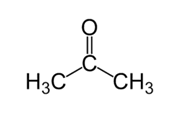
Acetone is an amphiphilic liquid that dries easily. It is a widely used solvent for paints, adhesives, and many other applications. Mitsubishi Chemical features very high purity acetone.
- EINECS: No. 200-662-2
- Japan, Chemical Substances Control Law: METI-No. 2-542
- Japan, Poisonous and Deleterious Substances Control Law: Not applicable.
- Japan, Fire Services Law: Hazardous material Class 4 Petroleums No.1 (water-soluble liquid).
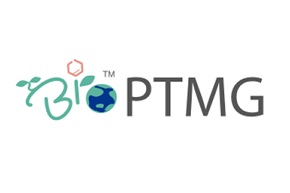
BioPTMG is a polyether polyol manufactured from plant-derived raw materials.
BioPTMG has the same performance as petroleum-derived PTMG as a raw material for polyurethane and polyester resins and has excellent impact, wear and hydrolysis resistance, flexibility at low temperatures, etc. Taking advantage of these characteristics, it can be used in a wide range of fields, from interior and fashion to industrial materials.
- Grades:
- BioPTMG650、BioPTMG1000、BioPTMG2000、BioPTMG3000
- Japan, Chemical Substances Control Law:
- (7)-129
- Japan, Poisonous and Deleterious Substances Control Law:
- Not applicable.
- Japan, Fire Services Law:
- Hazardous Material Class 4 Petroleums No.4 Hazardous Rank III(BioPTMG650)
Combustible Materials, Flammable Solids(BioPTMG1000, 2000, 3000)
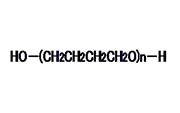
PTMG (Poly(tetramethylene ether)glycol / PTMG) is a linear polyether glycol with hydroxyl groups on both ends. As a polyol, it reacts readily with isocyanates (for example MDI, TDI), etc. to make resins with excellent properties.
- Grades:
- PTMG250、PTMG650、PTMG850、PTMG1000、PTMG1300、PTMG1500、PTMG1800、PTMG2000、PTMG3000、PTMG3200(developed grade in mass production)
- Japan, Chemical Substances Control Law:
- METI-No. 7-129
- Japan, Poisonous and Deleterious Substances Control Law:
- Not applicable.
- Japan, Fire Services Law:
- Hazardous Material Class 4 Petroleums No.3 Hazardous Rank III (PTMG250)
Hazardous Material Class 4 Petroleums No.4 Hazardous Rank III (PTMG650,850)
Combustible Materials, Flammable Solids (PTMG1000, 1300, 1500, 1800, 2000, 3000, 3200(developed grade in mass production))
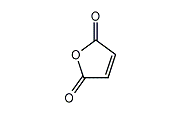
Maleic anhydride is produced by oxidation of benzene or a C4 hydrocarbon such as butane in the presence of a vanadium oxide catalyst. Maleic anhydride can be converted to maleic acid by hydrolysis and to esters by alcoholysis.
- EINECS: No. 203-571-6
- Japan, Chemical Substances Control Law: METI-No. 2-1101
- Japan, Industrial Safety and Health Law: Dangerous Goods and Toxic Substances Whose Names Should be Labeled and be Notified Appended Table 2-1978
- Japan, Poisonous and Deleterious Substances Control Law: Not applicable.
- Japan, Fire Services Law: Not applicable.
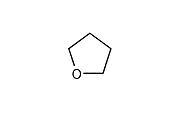
THF (Tetrahydrofuran) is a stable compound with relatively low boiling point and excellent solvency. It is widely-used for dissolution and reaction of various substances. Also it is used as a starting material for the synthesis of poly(tetramethylene ether) glycol (PTMG), etc. Since 1982, Mitsubishi Chemical's Tokai plant has produced high-purity, high-quality THF from butadiene using our proprietary technology.
- EINECS: No. 203-726-8
- Japan, Chemical Substances Control Law: METI-No. 5-53
- Japan, Industrial Safety and Health Law: No. 5-53
- Japan, Industrial Safety and Health Law: Dangerous Goods and Toxic Substances Whose Names Should be Labeled and be Notified Appended Table 2-1278
- Japan, Poisonous and Deleterious Substances Control Law: Not applicable.
- Japan, Fire Services Law: Hazardous Material Class 4 Petroleums No.1 (water-soluble liquid). Hazardous Rank II
- U.N. Class: 3
- U.N. No.: UN2056
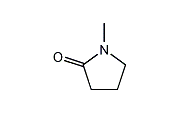
NMP (N-Methyl-2-Pyrrolidone) is a polar solvent with outstanding characteristics. It has a wide range of applications because it offers very high solvency, high boiling point, low freezing point, and ease of handling.
- EINECS: No. 212-828-1
- Japan Chemical Substances Control Law: METI-No. 5-113
- Japan, Industrial Safety and Health Law: No. 8-1-1014
- Japan, Industrial Safety and Health Law: Dangerous Goods and Toxic Substances Whose Names Should be Labeled and be Notified Appended Table 2-2108
- Japan, Poisonous and Deleterious Substances Control Law: Not applicable.
- Japan, Fire Services Law: Hazardous material Class 4 Petroleums No.3 (water-soluble liquid).
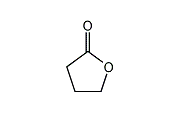
GBL has a wide range of practical applications because of its low freezing point, high boiling point, and a unique combination of solvent and electrical properties. It has applications as a solvent for special resins, in photography, in batteries, and as an electrolyte. Also a number of derivatives are synthesized from GBL.
- EINECS: No. 202-509-5
- Japan Chemical Substances Control Law: METI-No. 5-3337
- Japan, Industrial Safety and Health Law: No. 5-3337
- Japan, Industrial Safety and Health Law: Dangerous Goods and Toxic Substances Whose Names Should be Labeled and be Notified Appended Table 2-412
- Japan, Poisonous and Deleterious Substances Control Law: Not applicable.
- Japan, Fire Services Law: Hazardous material Class 4 Petroleums No.3 (water-soluble liquid).Aprotic, polar solvent.
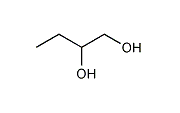
12BG (1,2-butanediol) is a branched glycol that has a primary hydroxyl group and a secondary hydroxyl group on adjacent carbon atoms. Mitsubishi Chemical Corporation offers two grades of purity. Both can be reacted with a dicarboxylic acid (e.g., phthalic acid or adipic acid) for use as a polyester polyol or a plasticizer, or reacted with an unsaturated dicarboxylic acid (e.g., maleic anhydride) for use as a raw material for unsaturated polyester resin. The high-purity grade 12BG is suitable for use as a solvent for inks and as a raw material for surfactants.
- EINECS: No. 209-527-2
- Chemical Substance Control Law (CSCL): METI-No. 2-235
- Japan, Industrial Safety and Health Act (ISHA): No. 2-235
- Japan, Poisonous and Deleterious Substances Control Act: Not applicable.
- Japan, Fire Service Act:Hazardous Materials, Category IV—Class III petroleums (water soluble liquids)
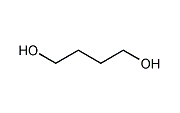
14BG (1,4-Butanediol) is a straight chain glycol with hydroxyl groups on both ends. It is used as a raw material for high performance polyester and polyurethane resins as well as for industrial chemicals like tetrahydrofuran and gamma-butyrolactone. Since 1982, Mitsubishi Chemical's Tokai plant has produced high-purity, high-quality 14BG from butadiene using our proprietary technology.
- EINECS: No. 203-786-5
- Japan, Chemical Substances Control Law: METI-No. 2-235
- Japan, Industrial Safety and Health Law: No. 2-235
- Japan, Poisonous and Deleterious Substances Control Law: Not applicable.
- Japan, Fire Services Law: Hazardous material Class 4 Petroleums No.3 (water-soluble liquid).
Polycarbonatediol, BENEBiOL™
[Close]
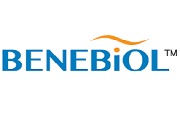
Polycarbonatediol(PCD) is a linear polycarbonate with hydroxyl groups at both ends. It easily reacts with isocyanate compounds(e.g. MDI, TDI, IPDI, H12MDI), and generates polymers with characteristics such as durability and chemical/hydrolysis resistance. BENEBiOL™ is the biomass-based PCD developed by our proprietary manufacturing technology. Because of “key monomer“ of each grade, polyurethane resins based on BENEBiOL™ will show an outstanding property level with regard to flexibility and chemical/stain resistance for example, in addition to the characteristics of conventional PCD. Besides, your product will be equipped with unique touch and feeling.Biomass-based polycarbonatediol with superior characteristics
Characteristics of polyurethane resins based on BENEBiOL™
non-edible raw material is used for some grades
transparency, stain resistance, chemical resistance, durability, toughness, weather resistance
flexibility, soft feel and touch, high hardness, good fit
Methyl Methacrylate, MMA
[Close]
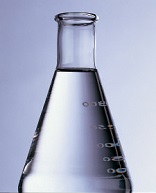
Known for its excellent transparency and weatherability, as well as its easy recyclability, this acrylic resin has attracted a great deal of attention for environmental considerations. In addition to its use as a material in its own right, MMA monomer is also an important constituent of various compound chemical products.
Methacrylic Acid, MAA
[Close]
Mainly used in paints, adhesives, and leather treatment agents, methacrylic acid is also used as a raw material in the manufacture of ion-exchange resins.
Methacrylic Esters
[Close]

Using methyl methacrylate or methacrylic acid as the raw material, we produce a range of methacrylic esters with diverse characteristics, suitable for many different applications.
These substances have been selected as the raw material for acrylic paint that excellent weather and chemical resistance. We can accept custom orders based on design requirements such as hard materials, soft materials, hydrophilicity, hydrophobicity, and reactivity to provide products usable in many different applications.

t-Butyl methacrylate (TBMA) has a Tg similar to that of MMA (approximately 100°C for the homopolymer), but is a more hydrophobic monomer than MMA. It is expected to improve solubility in weak solvent systems. Furthermore, by introducing it into polymers, it is expected to lower the density and viscosity compared to MMA. It is used as a raw material for paints, adhesives, dispersants, fiber treatment agents, coating materials, etc.

Allyl methacrylate (AMA) can be used as a crosslinking agent, and can also be used in graft polymerization by taking advantage of the difference in reactivity between the methacrylic group and the allyl group.It is used as a raw material for thermoplasticity modifiers for resins, resin surface hardness improvers, crosslinking agents, etc.

1,3-Butylene glycol dimethacrylate (BDMA) undergoes radical crosslinking and has a longer distance between crosslinking points than EDMA, allowing for the design of softer polymers. It is used as a raw material for crosslinking agents, adhesives, resin modifiers, sheet modifiers, fiber treatment agents, etc.
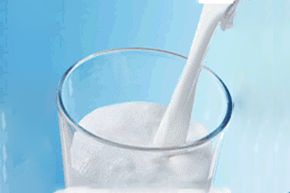
- Emulsion Type Resin (HX,LX,NT series)
-
Emulsion type resin is a water-based resin produced by emulsion polymerization. Our product line-up includes acrylic resins, acrylic-silicone resins, acrylic-urethane resins, acrylic-olefin resins, and organic-inorganic hybrid resins, which meets customers' requirements in various applications, mainly for paints.
UV Curable Coatings, DIABEAM™
[Close]

- Acrylic Pressure Sensitive Adhesives (PSA)
―To Create New Value for Your Needs -
COPONYL is pressure sensitive adhesive(PSA) resin made mainly from acrylic acid ester using such solvents as ethyl acetate and toluene. The demand for PSA is increasing and expanding: they are now used in a wide range of applications including labels, single/double-sided tapes, foams, and electronic applications such as protective masking films.
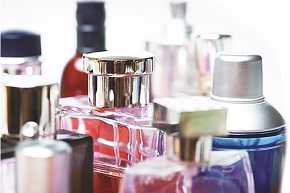
- SHIKOH ――UV Curable Resin from Mitsubishi Chemical
-
UV curable resin is garnering wide spread attention for its low-polluting, energy-saving properties and high productivity.
Mitsubishi Chemical offers a wide lineup of such resin under the SHIKOH brand name, with a special emphasis on urethane acrylate oligomer.
In addition to hard coating application, SHIKOH is suitable for use in a wide range of applications. Mitsubishi Chemical's SHIKOH holds the key to the future of ultraviolet curable resin.
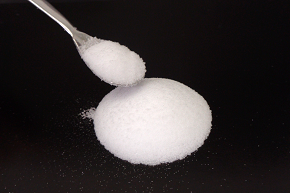
Acrylic Beads Resin
Acrylic beads resin is a solid bead-shaped methacrylic resin produced by suspension polymerization. Being solid and non-hazardous, customers can choose their own solvents, and it is easy to transport and store. We have manufacturing sites and sales networks around the world, enabling us to supply globally. We provide free samples from 500g for customers' initial study.
Acrylic Resins for Coating
[Close]

- We maximizes the potential of acrylic resin as a coating material
-
Based on the basic features of acrylic resin such as "transparency" and "high weather resistance," Mitsubishi Chemical contributes to solving customers' problems with its abundant product lineup and prompt and comprehensive customer service.
Utilizing our own methacrylate monomers, we produce and sell globally competitive and stable quality products.
Our resins are being used in a wide range of applications such as paints, inks, and adhesives.
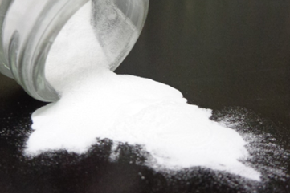
Acrylic Powder Resin
Acrylic powder resin is a fine powder resin made by spray-drying acrylic resin emulsion on particles. Core/shell type structural design is possible, and we are developing products that can demonstrate their characteristics in various applications. It shows good solubility in various solvents and liquid resins.

- From Current Needs into the Future
-
Nichigo-POLYESTER recreates the fields of high-tech adhesives, coating binders, and resin modification.
Nichigo-POLYESTER displays excellent adhesive performance with plastic films and moldings including PET, polycarbonate, and vinyl chloride, and metals including aluminum and copper. Used in tandem with isocyanate, melamine, and epoxy resins and other hardening agents, they offer increased heat resistance, solvent resistance, and hardness. Mitsubishi Chemical offers the optimum line-up for all customer needs, including amorphous solvent-soluble, crystalline hot melt, water-soluble, and special types.
Developed to respond to the increasing trends toward compactness and high speed of printers, this product has attracted considerable attention. We intend to develop into the field of color toners to expand the potential market further.
Food Additive, Acetic Acid
[Close]
Epoxy Resin, jER™
[Close]

Regarding the jER™ (formerly Epikote™ *) epoxy resin, Mitsubishi Chemical is prepared to support our customers' needs quickly and flexibly. Our production is extremely fast because we have accumulated many years of research with epoxy products. Our manufacturing, sales, research, and development are tightly integrated to enable rapid response to the challenges our customers face. (*Epikote™ is a trademark of Hexion Inc. )
jERCURE™ curing agents for epoxy resins are an abundant set of curing agents that cover the full range from low to high curing temperature with functional groups ranging from amine, mercaptan, and phenol to Lewis acid complex compounds. A curing agent can be chosen from this set to fit the application. There are water-based curing agents for water-based epoxy resins, too.
Diluent(reactive), YED
[Close]
YED is reactive diluents for an epoxy resin that provides low viscosity without compromising the resin's special characteristics.
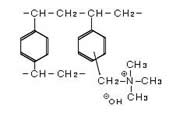
An amino functional group is incorporated into the anion exchange resin enabling the exchange of anions like the Cl- ion and the SO4-- ion. Strongly basic anion exchange resins and weakly basic anion exchange resins can be defined according to the basic strength of the amino functional group.
The ion exchange resin that has a quaternary ammonium group is strongly alkaline and dissociates just like NaOH and KOH. Therefore it is called a strongly basic anion exchange resin.
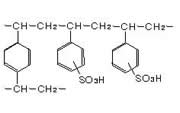
The strongly acidic cation exchange resins are bead-like products which have a sulfonic acid group in the cross-linked styrene frame. They can be used across the full pH range (0-14), and are relatively stable to temperature, even withstanding high temperatures of 100-120℃. They are used in a wide variety of fields including water purification, water softening, wastewater treatment, purification of pharmaceuticals and food, and catalysis.
Vinyl acetate monomer (VAM)
[Close]
Terephthalate Plasticizer
[Close]
Phthalate Plasticizers
[Close]
Adipate Plasticizer
[Close]
Other Plasticizers
[Close]
- Product Finder
-

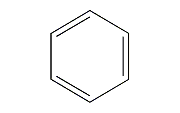
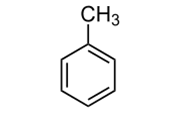
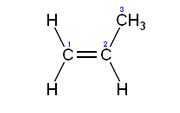
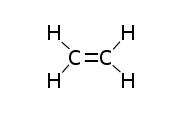
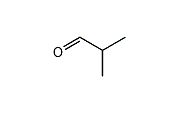
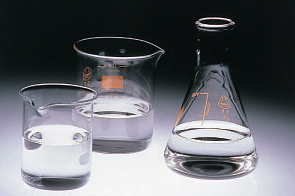



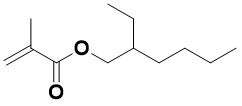


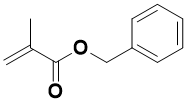
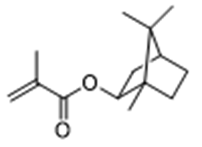

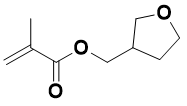

_structure.png)



